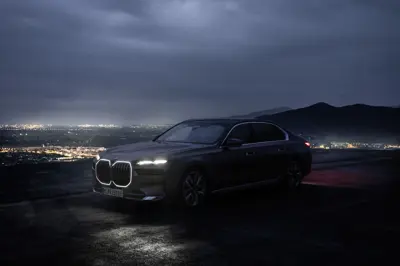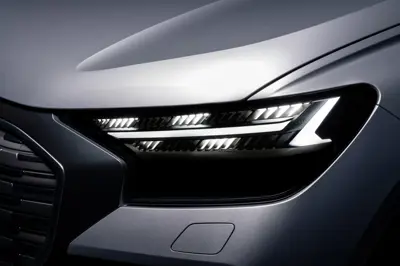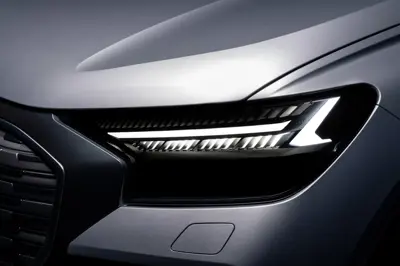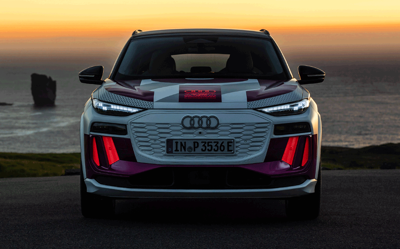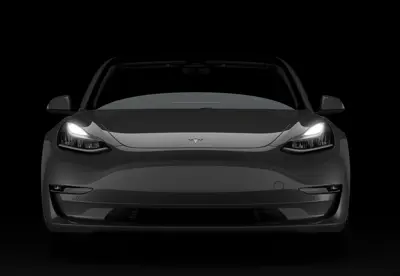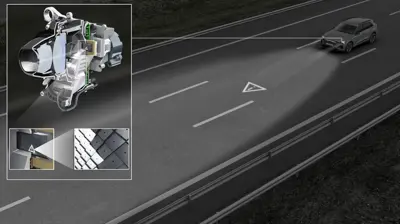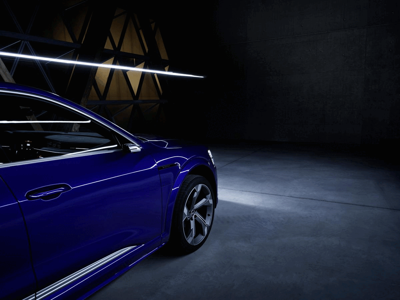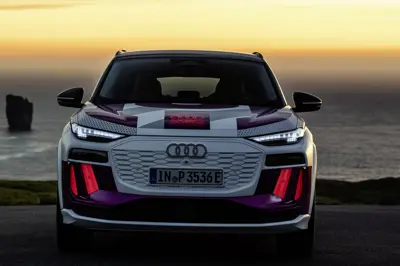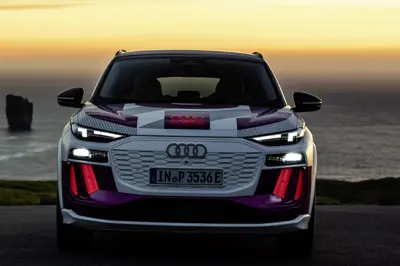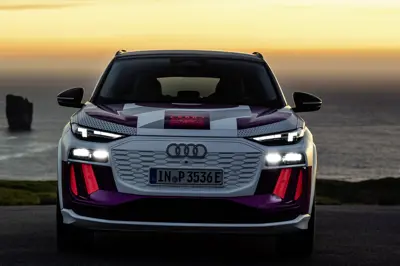Headlights & DRL
Headlight technology has come a long way since the early days of automotive lighting, evolving from basic incandescent bulbs to sophisticated LED, matrix LED, and laser headlights.
Advancements in headlight technology have significantly improved performance, efficiency, and safety, allowing for better visibility on the road and enhanced driving experiences. This article explores various car headlight technologies, focusing on LED headlights, matrix LED headlights, laser headlights, adaptive headlights, and daytime running lights (DRLs).
Legacy automakers like Audi, BMW, and Mercedes have maintained an edge over newer companies like Tesla and BYD in lighting technology.
Daytime Running Lights (DRLs)
Daytime running lights (DRLs) are low-intensity lights designed to improve vehicle visibility during daytime driving. They automatically activate when the vehicle is in motion, even if the headlights are off.
The primary purpose of DRLs is to increase vehicle visibility, making them more noticeable to other drivers and pedestrians, thereby reducing the risk of daytime accidents. This is particularly useful in conditions like fog, rain, or sun glare.
DRLs are typically located at the front of the vehicle and can use various technologies, including LED, halogen, or incandescent bulbs. LED technology is the most common due to its energy efficiency, long lifespan, and compact size.
Some DRLs can adjust their brightness or direction based on driving conditions, enhancing safety and performance. In many countries, DRLs are a mandatory safety feature, regulated by specific laws regarding their positioning, brightness, color, and functionality.
Certain models allow customization of DRL designs.
Low/High Beam Headlights
Headlights, also known as low/high beam lights, are the main lighting devices on the front of a vehicle. They help the driver see the road and surroundings at night or in low-visibility conditions. High beams are brighter and illuminate a larger area but can cause glare to other drivers. Low beams are dimmer, illuminate a smaller area, and are more suitable for urban driving.
Most EVs have sensors that automatically switch between low and high beams based on traffic conditions.
LED Headlights
LED (Light Emitting Diode) headlights are the standard in modern vehicles due to their energy efficiency, long lifespan, and compact size. They produce bright, crisp light that closely resembles natural daylight, providing excellent road visibility.
LED headlights offer design flexibility, allowing for various shapes and styles that enhance a vehicle's front-end appearance. They can be used for low beam, high beam, and fog lights, providing versatile lighting solutions. LED headlights also have faster response times than traditional bulbs, enabling quicker illumination and better reaction to changing road conditions.
LED headlights are durable, resistant to vibration, shock, and temperature changes, making them highly reliable for long-term use. They also consume less power than traditional bulbs, improving vehicle energy efficiency.
Matrix LED Headlights
Matrix LED headlights, also known as adaptive LED or pixel headlights, represent advanced headlight technology. They use an array of individually controllable LEDs that can be selectively turned on or off to create precise and adaptive lighting patterns.
Matrix LED headlights automatically adjust light distribution based on factors like vehicle speed, driving conditions, and surroundings.
These headlights detect oncoming or preceding vehicles and selectively dim or switch off specific LEDs to avoid glare while maintaining maximum illumination in other areas. This feature enhances night driving safety and convenience.
Some of the latest Matrix LED headlights offer visual effects to assist the driver, such as projecting information on the road. Mercedes calls this Digital Light, while Audi refers to it as Digital Matrix. These systems use projector devices to control millions of pixels.
They can also be used for aesthetic effects.
Laser Headlights
Laser headlights are the latest innovation in automotive lighting, offering advanced performance compared to LED and matrix LED headlights. They use lasers to produce light focused through a lens to create an ultra-bright, highly concentrated beam.
Laser headlights provide exceptional brightness, allowing for better visibility at longer distances. They have a longer lifespan and consume less power than traditional bulbs, making them more energy-efficient and environmentally friendly.
Laser headlights can be combined with other technologies, such as adaptive beam control and camera-based sensors, to create sophisticated lighting systems. For example, they can project information like navigation cues or traffic signs directly onto the road surface, providing an augmented reality display that assists the driver.
Adaptive Headlights
Adaptive headlights, also known as dynamic or swiveling headlights, automatically adjust the direction and intensity of the headlight beam based on the vehicle's speed, steering angle, and driving conditions. They provide better illumination around curves and corners, improving visibility and safety during nighttime or low-light driving.
There are different types of adaptive headlights, including those that use mechanical actuators to physically swivel the headlight housing and those that use LED or matrix technology.
Illustration
The video below demonstrates how the lights work on the Audi e-tron GT, including laser lights, matrix LEDs, and curve lights.

